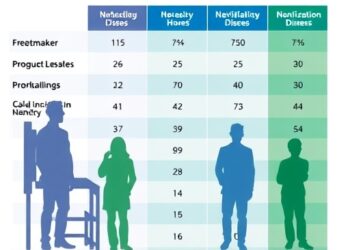In an era increasingly dominated by digital innovation, the healthcare sector stands at the forefront of revolutionizing patient care through advanced technology. However, while digital tools such as telemedicine apps, symptom checkers, and health monitoring devices promise enhanced accessibility and personalized treatment, their efficacy is heavily contingent upon cultural sensitive adaptation. A groundbreaking study published recently in Global Health Research and Policy has unveiled striking insights into the cultural adaptation processes of digital healthcare tools from the perspectives of those who matter most—caregivers and patients.
The research, conducted by Zhou, Shen, Tao, and their colleagues, addresses a pressing issue in digital healthcare development: the degree to which cultural factors influence the acceptance, usability, and ultimately the success of digital health applications globally. Their work provides a comprehensive exploration into how cultural contexts interplay with digital health technology design and deployment, illuminating challenges and opportunities that have remained largely underexplored in this rapidly evolving field.
Central to their findings is the realization that healthcare tools cannot adopt a one-size-fits-all model. Cultural norms, beliefs, language nuances, and health-seeking behaviors significantly affect how patients and caregivers engage with digital platforms. For example, certain communities may possess skepticism toward digital interventions if these tools are perceived to contradict traditional medical beliefs or if they fail to resonate with local customs. The team’s cross-sectional survey uncovered that patients prioritized culturally relevant content and interface design far more than previously assumed.
Moreover, the study highlights the critical role of caregiver perspectives, which are often overlooked in digital tool development. Caregivers serve as vital intermediaries between healthcare providers and patients, especially in communities where digital literacy varies widely. The research demonstrated that when caregivers found tools culturally aligned and accessible, patient adherence to digital health regimens improved markedly. This insight underscores the necessity for multi-stakeholder involvement in crafting culturally adaptive healthcare technologies.
The methodology employed was robust, involving a diverse cohort of participants from several cultural backgrounds to yield nuanced insights. The cross-sectional survey scrutinized users’ experiences, expectations, and perceived barriers when interacting with a selection of digital health tools. This enabled the researchers to identify key cultural parameters that influence digital health engagement, such as preferred communication styles, privacy concerns, and modes of information delivery, which tend to differ significantly across populations.
Among the technical revelations of the study is the impact of linguistic adaptation on user experience. Beyond mere translation, successful digital health tools embedded culturally specific idioms, health terminologies, and contextually relevant metaphors. This helped bridge comprehension gaps and fostered trust and emotional connection. The researchers argue that future digital health tool development should incorporate advanced natural language processing techniques tailored to local dialects and health-related vernacular.
In addition, visual and interface design emerged as a pivotal factor in the cultural adaptation process. The study found that color schemes, imagery, and symbols could either enhance or diminish user engagement depending on cultural symbolism. For instance, certain colors carry unique meanings in various cultures that could unconsciously influence user comfort and acceptance. Tailoring graphical user interfaces to these cultural signifiers enhances cognitive resonance and user retention.
Privacy and data security concerns also surfaced as significant determinants of cultural acceptance. Participants from communities with heightened concerns about data misuse expressed reluctance toward adopting digital health technology unless robust privacy assurances were evident upfront. The findings advocate for transparent and culturally sensitive communication strategies on data use and protection to build trust and encourage wider adoption.
Interestingly, the research highlighted a technology interface divide influenced by both age and cultural factors. Older adults in certain cultures displayed notable hesitation toward digital health tools, citing fears of complexity and reduced interpersonal interaction. To address this, the authors recommend incorporating adaptive user interface designs that consider generational preferences while maintaining cultural congruence, thus broadening tool accessibility across age groups.
The study also draws attention to the socio-cultural intricacies linked to health beliefs and practices that affect digital health tool efficacy. For example, in communities where holistic or alternative medicine practices predominate, digital platforms aligned solely with biomedical models were less embraced. Integrating culturally congruent health models or complementary information into these tools could foster inclusivity and better engagement.
Cross-cultural collaboration emerged as a key recommendation throughout the study. The researchers advocate for participatory design approaches involving local stakeholders such as healthcare providers, patients, and cultural mediators from inception stages through to deployment. Such collaborative models ensure that the digital health tools are not only tailored culturally but also responsive to evolving community needs.
Beyond the localized scope, the study’s findings have implications for global health equity. By enhancing cultural adaptation in digital health interventions, developers can contribute to narrowing digital health divides that exacerbate healthcare disparities. Culturally adaptive digital tools hold the promise of democratizing access to quality healthcare information and services, especially in underserved populations.
This research also propels forward the conversation about the ethical deployment of digital health technology. Cultural sensitivity goes hand in hand with ethical responsibility, ensuring respect for diverse health paradigms and patient autonomy. Tailoring digital health solutions can prevent inadvertent cultural insensitivity and potential marginalization of vulnerable groups.
Technically, the paper suggests leveraging emerging artificial intelligence frameworks capable of dynamic cultural adaptation. Machine learning algorithms that continuously learn from user interactions and contextual inputs can optimize digital healthcare tools to better meet cultural expectations without constant manual redesign.
In sum, the study by Zhou et al. foregrounds the indispensable role culture plays in shaping the digital healthcare revolution. It calls for a paradigm shift where cultural fluency is embedded into the fabric of digital health technology development rather than being treated as an afterthought. This research paves the way for more effective, equitable, and humane digital healthcare tools that resonate deeply with patients and caregivers worldwide.
As digital health becomes increasingly central to health systems globally, the integration of cultural adaptation strategies will be critical to unlocking the full potential of technology-driven health solutions. The insights from this meticulous cross-sectional survey provide a valuable blueprint for innovators, policymakers, and healthcare providers aiming to harness digital health as a truly global force for good.
Subject of Research: Cultural adaptation of digital healthcare tools and its impact on patient and caregiver engagement.
Article Title: Cultural adaptation of digital healthcare tools: a cross-sectional survey of caregivers and patients.
Article References:
Zhou, S., Shen, M., Tao, X. et al. Cultural adaptation of digital healthcare tools: a cross-sectional survey of caregivers and patients. Glob Health Res Policy 10, 36 (2025). https://doi.org/10.1186/s41256-025-00439-5
Image Credits: AI Generated
DOI: https://doi.org/10.1186/s41256-025-00439-5











